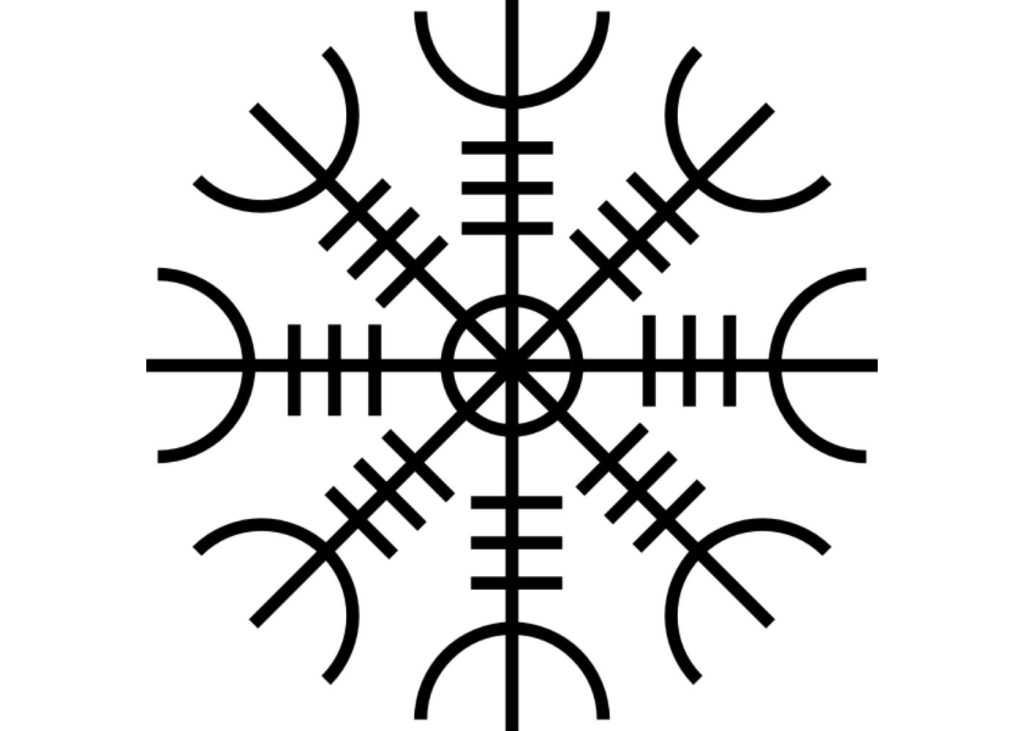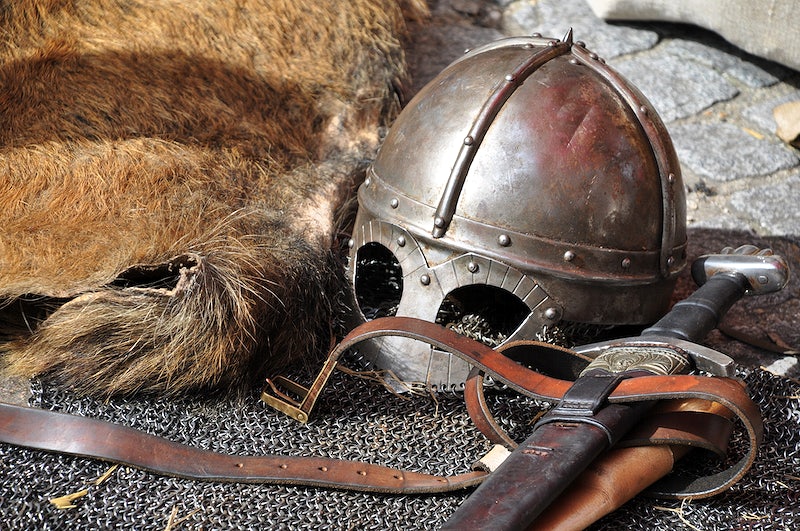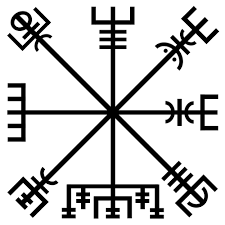The Helm of Awe is a popular and powerful Icelandic pagan symbol that consists of eight spikes surrounding the circular shape. Also known as the Helm of Terror, it represents dominance during conflict and has been used in various legends and myths.
The sign also features in old Norse mythology as a symbolic and physical object. According to Norse lore, wearing the Helm of Awe symbol protects the person from harm or danger.
Helm of Awe Origin Story
The Helm of Awe is a pagan symbol that consists of eight spikes surrounding the circular shape called the Aegishjalmur or Helm of Awe. The Nordic people believed in the existence of magic or Seidr.
Viking women were known to wear the Helm of Awe. These women who practiced magic, called Völva, technically predated the Viking age. They wielded magical powers and were healers and spiritual leaders. They dressed in colorful dresses and fur hats and carried a staff or wand to cast their magic spells.
The Völva could also go into a trance and go from the world to the spiritual world and commune with spirits to make prophecies. They could also use magic to curse someone, making them ineffective in battle.
The Helm of Awe’s Connection to the Norse Vikings
During the Norse Viking Age, people did not write down the spells or magic symbols, but they were collected into books or grimoires. Some grimoires containing these spells have survived the ages, and some include the symbol Helm of Awe.
However, the earliest Helm of Awe references indicates that it is a physical object. In the Poetic Edda, a vast collection of Norse poetry, the dragon Fafnir had “[worn the helm] before the sons of men” and, while wearing it, “found no power a match for my own.”
Then Sigurd slays Fafnir and takes the helm, making scholars believe that Fáfnismál is discussing an actual, physical helmet in this portion of the poem. But some people disagree with this interpretation.

What Does the Helm of Awe Represent?
The Norse women used to draw the Helm of Awe symbol on their foreheads between their eyes for ultimate protection. According to the myths, it worked better when they inscribed the symbol with either spit or blood.
Wearing the Helm of Awe
They would also draw the Viking symbol on the inside of helmets to ensure it rested right between the eyes. The reason behind this placement isn’t because of how it looks. This placement was believed to invoke protection that wasn’t limited to physical aspects.
The Nordic warriors painted the symbol on their bodies before going into a battle, believing it was a powerful protective spell.
Symbol of Dominance and Power
The Helm of Awe is also seen as a sign of dominance during a conflict. Besides that, the symbol also represents the ability to suppress your fears while instilling the emotion of fear in others.
This approach relies on the philosophy of a mirror. When a person sees the terrifying enemy coming closer, it leads to fear, and one reflects the fear on them. It helps one become impervious and focus on the mission to destroy the enemy.

What is Written Around the Helm of Awe?
Many experts believe the Helm of Awe to be a rune. Each rune is a pictographic or ideographic symbol for some cosmological power. To invoke or direct the force, one had to write the rune.
The arms of the symbol Helm of Awe form a Z rune or Algiz, which depicts protection from the enemies and overcoming them.
The spikes that are perpendicular to the arms are considered Isa runes. It has no definitive meaning, but some people think Isa means ice. It might be a correlation to the hardness and concentration of ice or could relate to the spirit of giants that live in the dark and cold winter.

Is The Helm of Awe a Pagan Symbol?
Some sources suggest that the Helm of Awe symbol connects with Germanic paganism. They believe that the explanation of the runes in the symbol can serve as the keys of Solomon.
The Helm of Awe was commonly used in the heathen and pagan practices such as Asatru or Germanic Paganism. These ancient magical sigils, called Galdr Staves, Galdrastafir, or Galderstave, have been used since the Viking era.
The Helm of Awe has been a popular symbol among the Vikings, as they drew the symbol on the forehead right between the eyes as a form of protection during battle. It continues to be used in newer faiths and is a popular tattoo.
If you found this article helpful, check out this post on Viking runes and meanings.

